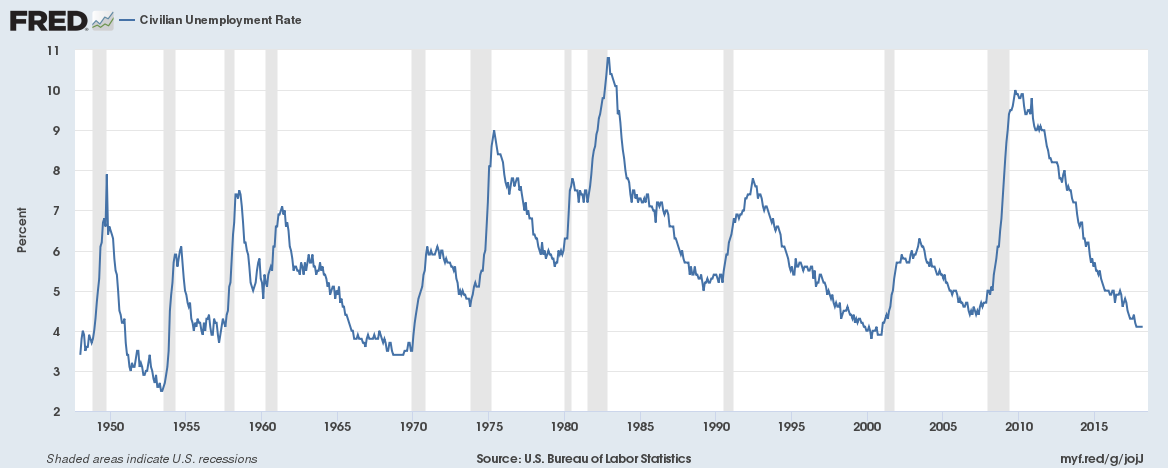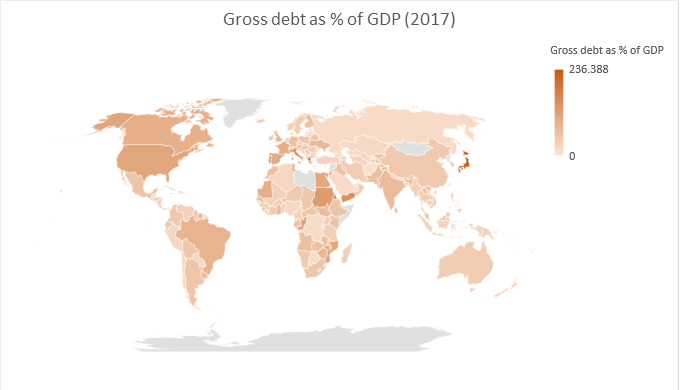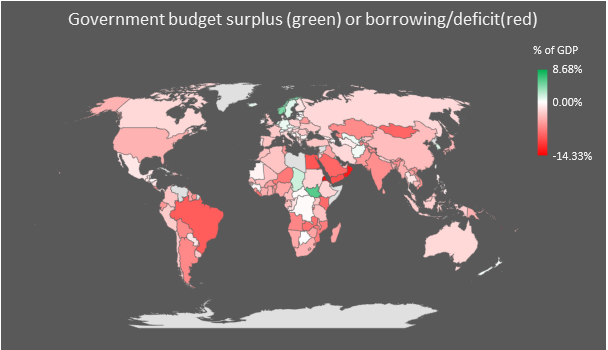The US Bureau of Labor Statistics data reveals that the US unemployment rate has a hit a new multi-year low four to eight months before the start of every recession since the 1940s. In other words, the economy hits full employment four to eight months before the start of a recession.
The graph below might help visualise it better (the shaded areas indicate recessions),

Why does this matter now? Continue reading “This is what has happened to the unemployment rate in the US four to eight months before every recession since the 1940s and why it matters now”

